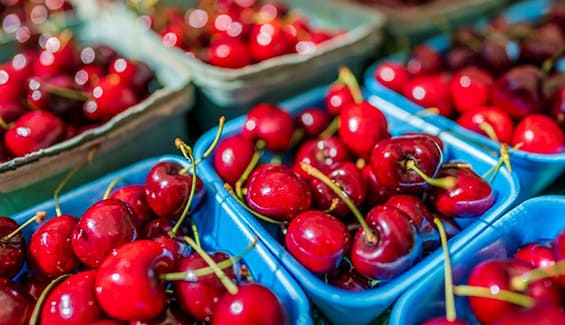China’s burgeoning middle-class, together with the China-Australia Free Trade Agreement has created a wealth of opportunities for Australian businesses looking to export to China – particularly in the food and beverage sector.
The world has witnessed the astonishing growth of China over the last four decades of economic reforms set in motion by Deng Xiaoping in 1978. After years of rapid growth, the Chinese economy has entered a period of slower, more sustainable, consumption-led growth that officials have described as the ‘New Normal’.
Data from the National Development and Reform Commission shows that China’s consumer spending accounted for 54.3 percent of the country’s 2020 GDP. Urban consumer spending per capita on food and beverage increased by 38.8% in the eight years to 2020 according to the Chinese National Bureau of Statistics.
Concurrently, Australia’s export of value-added products has grown sharply over the past five years, partly due to the China-Australia Free Trade Agreement and the emergence of cross-border e-commerce.
Opportunities for Australian Food and Beverage players
With their reputation for quality, Australian products have long been favoured by Chinese consumers who will most often pay a premium.
Additionally, the China-Australia Free Trade Agreement (FTA) provides significant advantages for Australian businesses. More than 96% of Australia’s goods exports to China are now eligible to enter duty-free or with preferential access.
Processed food products
For the manufacturers and distributors of processed food products (such as breakfast cereals) the FTA eliminates the tariff (which may be as high as 25% for countries without a free trade agreement) on exports.
Fresh Foods
The high demand in China for fresh produce from Australia has led to increased investment in cold chain logistics by e-commence businesses making it easier to get fresh food such as fruit, meat and milk products into the country.
Australian fruit in particular is a highly sought-after commodity. Chinese people place great importance on cultural festivals centred around the lunar calendar. These festivals are often occasions for gift-giving and fruit is a traditional gift – especially in parcels and hampers.
Horticultural products
China is a rapidly growing market for Australian horticultural products. In 2019, Australia exported 9,348 tonnes of horticultural products to mainland China, accounting for 41% of the country’s total horticultural exports according to the Australian Horticultural Exporters and importers association.
Challenges
While there are great opportunities in this sector, there are also several challenges.
Chinese consumer demographics and their food buying decisions
China’s consumer base is far more geographically dispersed than that of Australia. It extends beyond the eastern seaboard to include high-income residents in several inland cities. The range of geographic and socioeconomic populations each have marked differences in consumer buying power and preferences.
Selling Channels
In comparison with other markets, the separation between retail and e-commerce is becoming less apparent in China. An increased number of consumers feel comfortable buying items such as fresh produce online (a market that is comparably sluggish in Western countries). In addition, distribution channels in China can be long and complex.
Market brands
A ‘famous foods’ tradition creates opportunities for products with a strong brand or provenance story. However, managing intellectual property protection in China is still challenging and can be costly.
Competition
While Australia was a key supplier of agrifood products to China in 2017, it was fourth in line. Brazil, US and Canada were the top three exporters to China in the same year. And competition for this lucrative market is very high.
For example, Australia currently faces competition from New Zealand in the cherry market with the New Zealand fruit being comparatively high in quality but lower in price. Additionally, Chinese consumers have limited access to Australian avocadoes with Brazil, Chile and Mexico being the preferred origin in Chinese supermarkets.
Competition from within China is also rising. As blueberries become popular among young people, China has begun growing its own blueberries from March to October each year. The nation is now forecast to produce the most blueberries worldwide by 2026.
Services, Resources and Support
Organisations
The Australian Trade and Investment Commission is the Australian Government’s international trade promotion and investment attraction agency.
The Australian Food & Grocery Council is an industry association which represents the manufacturers and suppliers behind Australia’s food, beverage, and grocery brands.
Dairy Australia is the national service body for the Australian dairy industry.
Hort Innovation works to improve productivity, farm gate profitability and global competitiveness of Australian horticultural industries.
Meat & Livestock Australia’s purpose is to foster the long-term prosperity of the Australian red meat and livestock industry by investing in research and marketing activities.
Wine Australia supports a competitive wine sector by investing in research, development and extension, growing domestic and international markets, protecting the reputation of Australian wine and administering the Export and Regional Wine Support Package.
Export Finance Australia are the Australian Government export credit agency. They help businesses export by providing advice, loans and other financial solutions.
For more information click here.
Business enterprise centres provide mentoring, business analysis, training, grants and networking advice.
For more information click here.
Australian government finance assistance
Export Market Development Grants
The Export Market Development Grants (EMDG) scheme is a key Australian Government financial assistance program for aspiring and current exporters.
To find our more about the EMDG please read our recent article here.
Other Grants
There is a wide range of other government grants and financial assistance. For more information click here.
Export Council of Australia provide online training in exporting.
For advice on your exporting strategy please contact your local William buck advisor.




















